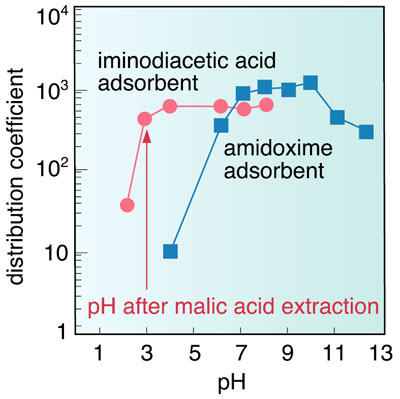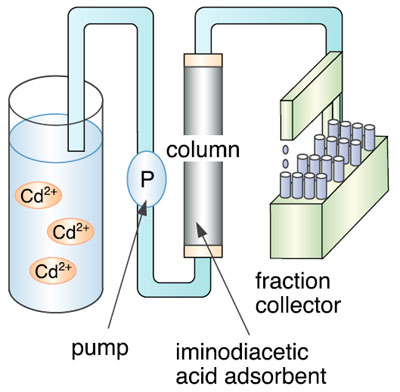Scallops are a specialty product of Aomori prefecture. This prefecture produces one hundred thousand tons of cultured scallops per year. In the process of boiling and packing scallop adductor muscle in cans (Fig. 6-5), 20 thousand tons of wastes, such as midgut glands and genital glands are generated. The waste midgut glands, which contain valuable nutrients such as docosahexaenoic acid, eicosapentaenoic acid, vitamins, and minerals, are currently incinerated, since they contain toxic cadmium (Cd) in the range of 10 to 20 ppm.
Radiation-induced graft polymerization can be used to synthesize adsorbents which effectively remove toxic metal ions. A particularly effective metal-adsorbent fiber can be synthesized by radiation processing of a nonwoven fabric with an electron beam.
Although Cd impurities are strongly bonded to the denatured proteins of the midgut gland after the process of boiling, the Cd can be extracted by dipping the boiled midgut glands into malic acid, which can be used as food. Iminodiacetic acid adsorbent was more profitable for removal of the Cd than amidoxime adsorbent, since the pH of the malic acid solution used to extract the Cd is 3.3 (Fig. 6-6). Cd ions in the malic acid solution are then removed using as a column packing an iminodiacetic acid adsorbent which has been synthesized using the radiation-induced graft polymerization technique (Fig. 6-7). As a result, the concentration of Cd ions in a volume treated with malic acid which is 120 times the volume of the column could be effectively reduced to below the legal limit of 0.1 ppm, using a flow rate of 230 times the column volume per hour.
This project has been adopted by an industrial technology program offered by the New Energy and Industrial Technology Development Organization (NEDO) and has been carried out in cooperation with Hachinohe Technical Laboratory (Aomori Industrial Research Center), Hachinohe National College of Technology, and Aomori Scallop Waste Disposal Cooperative, with the aim of its being put into practical use.
|


